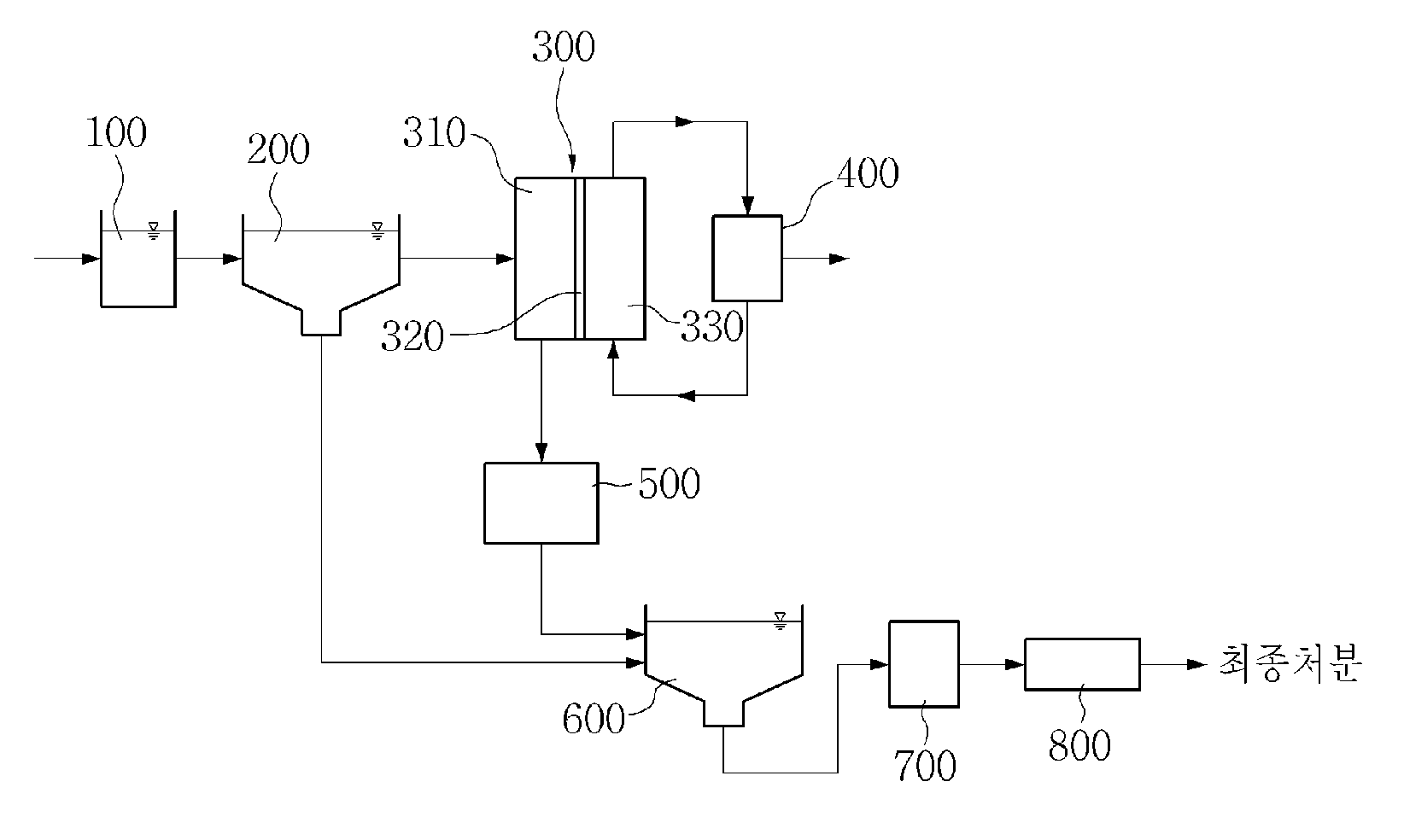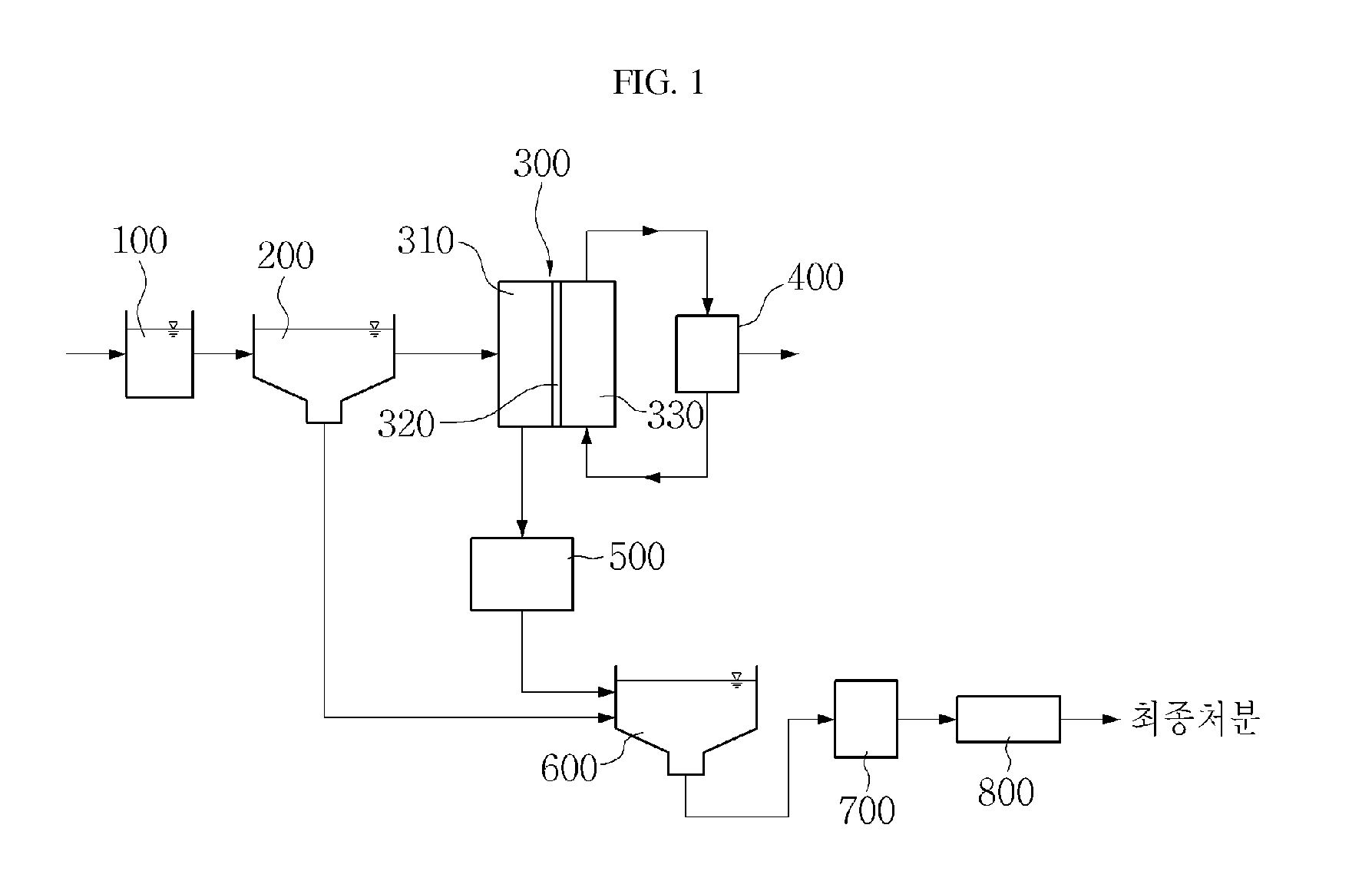Plants for advanced treatment of wastewater and method for treating wastewater using thereof
a technology for wastewater treatment and advanced treatment, applied in biological water/sewage treatment, multi-stage water/sewage treatment, membranes, etc., can solve the problems of high maintenance and administration fees for cleaning and replacing membranes, difficult operation of efficient methods, and high power operation costs, so as to reduce the degree of contamination and reduce the energy consumption of the process , the effect of easy control of membrane contamination
- Summary
- Abstract
- Description
- Claims
- Application Information
AI Technical Summary
Benefits of technology
Problems solved by technology
Method used
Image
Examples
Embodiment Construction
[0023]Hereinafter, an embodiment of the invention will be described in more detail.
[0024]The invention relates to an advanced wastewater treatment apparatus, and more particularly, to an advanced wastewater treatment apparatus including a forward osmosis module, a draw-solution separation device, and an ammonia removal device. The forward osmosis module is installed after a first settling tank. The first settling tank performs a first sedimentation process of inflow water. In this instance, the inflow water flows into the first settling tank after passing through a grit chamber. The forward osmosis module includes an inflow-water side where first-treated water treated by the first settling tank flows from the first settling tank, a separation membrane for allowing water of the first-treated water to pass therethrough by forward osmosis induced by osmotic pressure difference, and a draw-solution side where the draw solution flows for inducing the osmotic pressure difference between t...
PUM
| Property | Measurement | Unit |
|---|---|---|
| osmotic pressure | aaaaa | aaaaa |
| energy | aaaaa | aaaaa |
| size | aaaaa | aaaaa |
Abstract
Description
Claims
Application Information
 Login to View More
Login to View More - R&D
- Intellectual Property
- Life Sciences
- Materials
- Tech Scout
- Unparalleled Data Quality
- Higher Quality Content
- 60% Fewer Hallucinations
Browse by: Latest US Patents, China's latest patents, Technical Efficacy Thesaurus, Application Domain, Technology Topic, Popular Technical Reports.
© 2025 PatSnap. All rights reserved.Legal|Privacy policy|Modern Slavery Act Transparency Statement|Sitemap|About US| Contact US: help@patsnap.com


